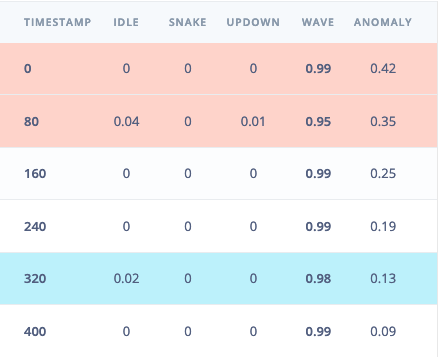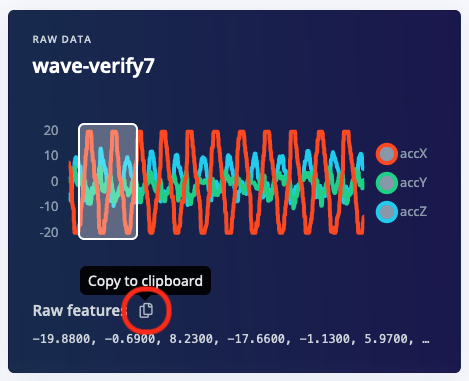Prerequisites
Make sure you followed the Continuous motion recognition tutorial, and have a trained impulse. Also install the following software:- Node.js - to build the application.
Deploying your impulse
Head over to your Edge Impulse project, and go to Deployment. From here you can create the full library which contains the impulse and all external required libraries. Select WebAssembly and then click Build to create the library. Download and unzip the.zip file.
Then, create a new file called run-impulse.js in the same folder, and add:
Running the impulse
With the project ready it’s time to verify that the application works. Head back to the studio and click on Live classification. Then load a validation sample, and click on a row under ‘Detailed result’.
Selecting the row with timestamp '320' under 'Detailed result'.

Copying the raw features.
Troubleshooting
Argument list too long
There’s a limited number of arguments that you can pass on the command line, and if your raw features array is larger than this number you will be presented with the error:Argument list too long. To get around this you can create a file called features.txt, put your features in there, and then call the script via: